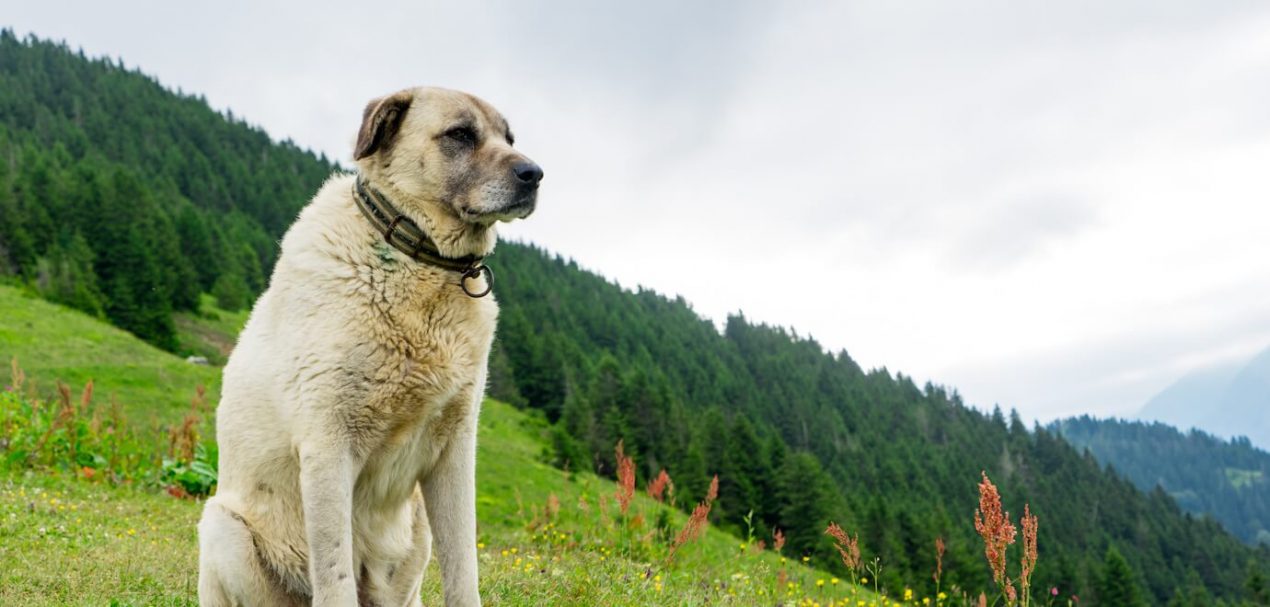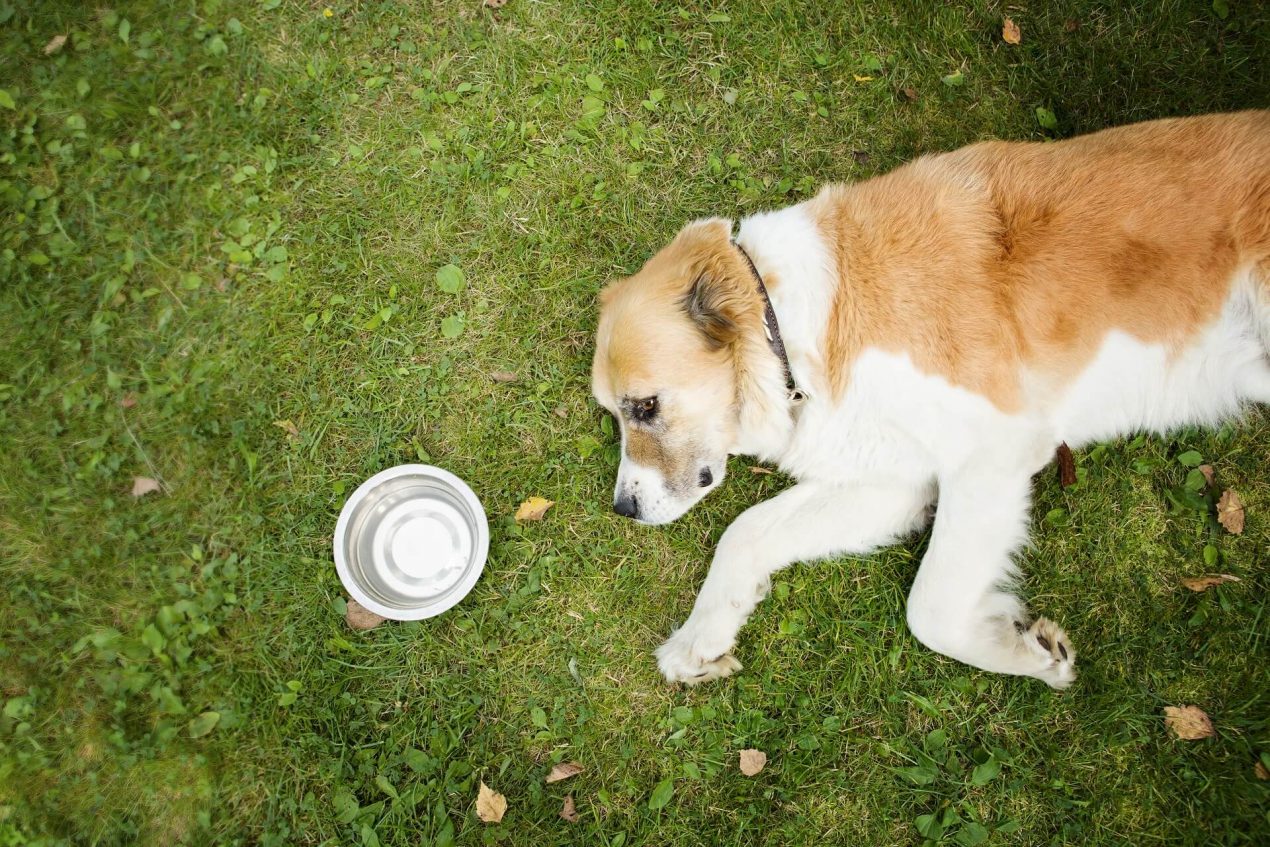The Alabai, also known as the Central Asian Shepherd Dog or Central Asian Ovcharka, is more than just a dog. He is a symbol of strength, courage, and loyalty. In the vast expanses of Central Asia, where he originates, he has been a faithful companion to humans for centuries.
History of the Alabai
The history of the Alabai stretches far back. This impressive dog can trace its roots back over 5,000 years. Originally bred in the rugged landscapes of Central Asia to protect sheep and goat herds from predators, he has proven himself not only as a herding dog but also as a guard and protector.
His origins lie in countries like Turkmenistan, Kazakhstan, and Uzbekistan. Here, he was valued not only for his physical strength but also for his unwavering courage and loyalty to his owner.
Breed Overview
GROUP: Working
HEIGHT: 25.5-27.5 inches
WEIGHT: 88-110 lbs
COAT: Smooth with an undercoat
COAT COLOR: Black, brindle, gray, white, fawn
LIFE SPAN: 12-17 years
TEMPERAMENT: Protective, adaptable, trainable, strong, independent, courageous
HYPOALLERGENIC: No
ORIGIN: Various Asian countries
Appearance of the Alabai
When you see an Alabai for the first time, you will be impressed by its imposing appearance. He is large, muscular, and exudes a natural authority.
Size and Weight: Male Alabais can reach a height of 65 to 78 cm and weigh between 50 and 79 kg. Females are typically slightly smaller and lighter, standing at a height of 60 to 69 cm and weighing 40 to 65 kg.
Color Variations and Coat Texture: The color palette of the Alabai is diverse. From black, white, brindle to gray and rust, there are many color variations. His coat is dense and can vary depending on climate and genetics.
| Affection Level | Medium |
| Friendliness | Medium |
| Kid-Friendly | Medium |
| Pet-Friendly | Medium |
| Exercise Needs | Medium |
| Playfulness | Medium |
| Energy Level | Medium |
| Trainability | High |
| Intelligence | Medium |
| Tendency to Bark | Medium |
| Amount of Shedding | Medium |
Temperament and Character
The Alabai is not only physically impressive but also characteristically so. He is confident, independent, and very intelligent. Despite his size and strength, he is known for his calm and balanced temperament.
Interaction with Humans: Alabais are very loyal and affectionate towards their family. They are vigilant and protect their territory and loved ones with determination. It is important to socialize them well from a young age so they learn to be wary of strangers but not aggressive.
Interaction with Other Animals: Thanks to their history as herding dogs, Alabais generally get along well with other animals, especially if they have been raised with them from a young age. However, it is important to socialize them properly and introduce them to other animals to avoid potential aggressiveness.

Acquiring an Alabai
The decision to bring an Alabai into your family should not be taken lightly. There are some important factors to consider.
Selecting the Right Breeder:
A responsible breeder will ensure that the puppies grow up in a healthy environment and receive all necessary medical examinations. It is important to ask the breeder for the health certificates of the parent dogs and ensure that the puppy is well-socialized.
Considerations:
Before deciding on an Alabai, make sure you have enough space for him. These dogs need plenty of exercise and should not be kept in a small apartment. It is also important to research the needs and character of the breed to ensure it fits your lifestyle.
Puppy Development and Training
An Alabai puppy is a bundle of energy and curiosity. It is important to provide him with the right education and socialization from the beginning.
Growth Phases and Milestones:
Like all dogs, the Alabai goes through various growth phases. It is important to know these phases and support the puppy accordingly.
Proper Training:
A well-trained Alabai is a pleasure. It is important to start training early and be consistent. Positive reinforcement and patience are the keys to a well-behaved dog.
Education and Training of the Alabai
The education and training of your Alabai are essential elements in shaping him into a well-behaved and balanced dog.
Importance of Socialization:
Socialization plays a crucial role in this process. Start this process early and ensure that your puppy encounters various people, from children to adults, as well as becoming familiar with other animals, especially dogs. This promotes his social development and minimizes future aggression or fears.
Basic Commands:
A well-trained Alabai should master the commands “Sit,” “Stay,” and “Come.” It is important to teach your dog to respond to these commands.
Positive Reinforcement:
Training should always be based on positive reinforcement. Reward good behavior with treats, praise, or toys, and remain consistent. Ensure that all family members follow the same commands and rules.
Special Characteristics and Challenges:
Like every breed, the Alabai has its own special characteristics and challenges. He is an independent dog who sometimes wants to go his own way. Therefore, patience is required, especially when he is learning new commands. Additionally, he has a strong protective instinct, which can be a challenge in certain situations, such as encounters with strangers or other animals. It is important to recognize this instinct and channel it properly.
How to Care for an Alabai
An Alabai is not only a loyal companion but also an animal with special needs. It is of great importance that you recognize these needs and provide him with a suitable home. A large garden or yard would be ideal for him, as he needs plenty of space to move and play as a large dog. If you live in an apartment, it is essential to provide him with enough exercise.
Who is the Alabai Suitable for?
The Alabai is a breed originally bred for guarding and protecting livestock from large predators in Central Asia. Accordingly, the Alabai is not suitable for everyone and requires appropriate training and socialization. This breed needs an experienced owner who can train and socialize them properly. They are not suitable for beginners or families living in urban areas. With the right care and attention, however, they can be loyal and protective companions.
Activities with the Alabai
The Alabai is an energetic dog who needs both physical and mental stimulation. At least two extensive walks a day are essential to keep him fit and give him the opportunity to explore his surroundings. In addition to exercise, he loves to play, whether in the garden or living room. Dog sports can also be a great way to challenge him, as he is very intelligent and eager to learn.
Involvement in Dog Sports:
Dog sports such as agility, obedience, or protection training can be a great way to physically and mentally challenge the Alabai. He is intelligent and eager to learn and will love the challenge.

Grooming an Alabai
Proper care of your Alabai is crucial to keeping him healthy and content. Coat care plays a central role in this. His coat should be brushed at least once a week to remove tangles and dead hair. Additionally, bathing him every few months or as needed with a mild dog shampoo will help keep his skin healthy.
Feeding Your Alabai:
A balanced and nutrient-rich diet is essential. Choose a high-quality dog food that contains all essential nutrients to keep him fit and his coat shiny. Fresh water should always be available. Occasional treats are fine, but make sure they are not too high in calories.
Health and Genetic Diseases
Your Alabai should always be in good health. However, there are health problems that can occur more frequently in this breed. Hip dysplasia, a malformation of the hip joint, can cause pain. Heart diseases can also occur. Therefore, regular check-ups and a healthy diet are essential. Also, keep an eye on your Alabai’s eyes and consult a veterinarian promptly if you notice any redness or irritation.
Life Expectancy and Care in Old Age:
An Alabai typically lives 12 to 17 years on average. Health problems may increase with age. Therefore, veterinary visits should be more frequent in this stage of life. The diet may need to be adjusted, and supplements may be beneficial. Nevertheless, your Alabai still needs exercise in old age, albeit in a more moderate amount.
Interesting Facts
The Alabai has an impressive history deeply rooted in Central Asia. Originally used as a herding and guard dog for sheep flocks in regions such as Kazakhstan, Kyrgyzstan, and Turkmenistan, he was not only a herding dog but also a reliable guard and war dog. However, his deep loyalty and attachment to his family make him a special companion always ready to protect his loved ones.
Related Breeds and Popular Crossbreeds:
There are several dog breeds that are similar to or can be confused with the Alabai. The Kangal, a Turkish shepherd dog, shares many similarities with the Alabai, although there are differences in appearance and temperament. Another impressive dog is the Caucasian Ovcharka, originating from the Caucasus, known for its dense fur and imposing size. It’s fascinating to see how these different breeds, despite having different origins, share many common characteristics.
Conclusion
The Alabai is an impressive dog with a long history and many wonderful qualities. He is loyal, brave, and a great protector. At the same time, he requires consistent training, plenty of exercise, and a loving environment. If you’re willing to invest the time and effort needed to properly train and care for him, you’ll be rewarded with a loyal and loving companion. It’s important to stick to the principles of positive reinforcement, be consistent, and ensure he is well-socialized. With the right care and attention, your Alabai will be a valuable member of your family.
Alabai Overview
Pros
- Low-maintenance coat
- Very loyal to their owners
- Typically healthy breed
Cons
- Can be aggressive toward strangers
- Not good for apartments
- Difficult to train


